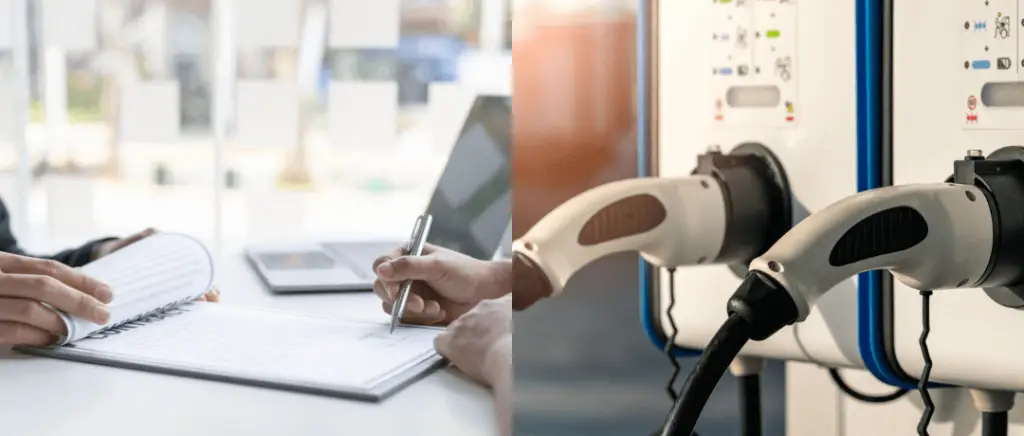your charging point
What are the advantages of installing a recharging point at home?
With the growth of electric mobility in France, more and more private individuals and businesses are opting to acquire an electric vehicle. For example, according to Avere France an increase of 49.5 % in passenger car and light commercial vehicle registrations in 2023224,908 since the start of the year. The most practical way of recharging battery of an electric car is the installation of a home charging point.
Like electric vehicles, almost 110,000 recharging points open to the public in FranceThis represents an increase of 53.3% compared with N-1.
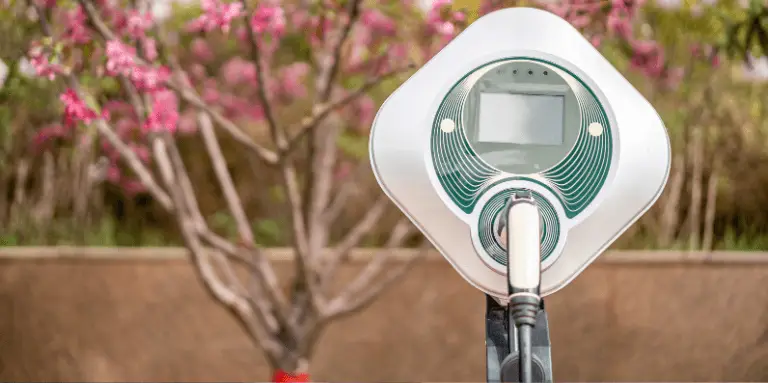
Here are the significant advantages of buying a home charging solution:
- Greater freedom : A home charging point means you can recharge your electric vehicle whenever you want, without having to worry about the availability of public charging points or travelling just to do so.
- Non-negligible safety : A home charging point is designed to be safer than a standard household socket. Charging stations are designed to withstand particularly severe conditions, without the risk of overheating or fire. They are fitted with circuit breakers and differential switches to protect your home's electrical installation.
- Ease of use : A home charging point is easier to use than a standard household socket. It is equipped with intelligent functions that allow you to programme charging at off-peak times, for example.
- Added value for the house : Installing a home charging point can add value to the price of your home if you sell it. Given the democratisation of green mobility, this is a considerable advantage for potential buyers, saving them from having to install a charging point themselves.
- Unprecedented return on investment: Installing a home charging point can reduce your costs in the long term. Home electricity is cheaper than electricity from public charging points, and home charging points can be fitted with options to reduce energy consumption.
Install a charging point home charging is seen as a major investment, often associated with the relatively major purchase of an electric vehicle. This raises the question of whether or not to buy this type of charging point. However, as we have already seen, it offers a number of significant advantages, proving that the charging point is a must for optimum quality of life.
Have your charging solution installed by an IRVE-certified installer
According to the decree of 12 January 2017, the installation of the charging point with a power rating greater than or equal to 3.7 kW must be carried out by a qualified electrician with IRVE certification (certifying that the electrician is trained and experienced in installing charging points for electric vehicles).
This IRVE qualification (Recharging Infrastructure of Electric Vehicles) is issued by AFNOR or Qualifelec on the basis of 3 levels of training:
- Level 1 for a terminal with a maximum power of 22 kW, without communication or supervision functionalities.
- Level 2 for a terminal with a maximum power of 22 kW, with configuration for Wallbox and for station supervision.
- Level 3 for a terminal with a power rating of more than 22 kW (i.e. fast terminals).
Calling in such a professional will ensure you have a high-quality, safe installation that complies with the NF C 15-100 electrical standard. Basically, your electrician will carry out an electrical diagnosis and check that your electrical installation is earthed before fitting the necessary equipment.
If you would like to find out more, we have our guide to home charging point installation.
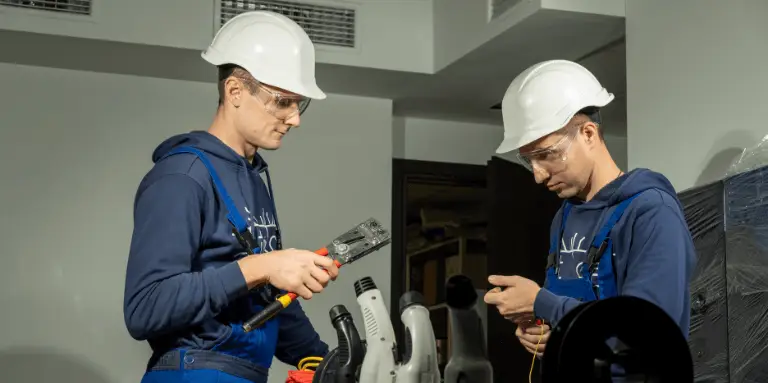

Support for installing a charging point
In 2024, a number of financial grants and tax incentives are available to facilitate the installation of charging points for electric vehicles. Here are the main grants and subsidies up to date, as well as the standards to be met in order to benefit from these advantages.
Grants and subsidies
Energy Transition Tax Credit (CITE)
- Amount : Up to 30 % of the cost of installing the charging point, with a ceiling of €3,000 for a main residence.
- Conditions: The charging point must be installed by an IRVE (Infrastructure de Recharge pour Véhicules Électriques) certified professional.
- Source : Ministry of Ecological Transition.
Advenir Bonus
- Amount : Up to €960 for an individual installation and up to €1,660 for a collective installation in condominiums.
- Conditions: The bollard must be connected to the public electricity supply network and comply with current standards.
- Source : Advenir programme.
Support from the Île-de-France Region
- Amount: 50 % of the installation costs, with a ceiling of €1,200 for an individual installation.
- Conditions: The system must be installed in a condominium or business located in the Paris region.
- Source : Île-de-France Mobilités.
Local Grants
- Amount : Varies depending on the municipality or region, generally between €500 and €2,000 per recharging point.
- Conditions: Check with your town hall or regional council to find out what assistance is available locally.
- Source : Guide to local aid.
Standards and Obligations in 2024
IRVE certification
- Charging stations must be installed by IRVE-certified professionals to ensure compliance with electrical safety standards.
- Certification ensures that the installation complies with current technical and safety regulations.
Obligations for multi-storey car parks
- New Buildings Car parks for new buildings must be pre-equipped with charging points.
- Existing buildings By 2025, car parks with more than 20 spaces must be equipped with at least one recharging point for every 20 spaces.
- Source : Mobility Orientation Law.
Terminal Compatibility and Safety
- The terminals must comply with European safety standards (IP54 for water resistance and IK10 for shock resistance).
- They must also be compatible with the various types of electric vehicle on the road.
Installation in a condominium
- The "Climate and Resilience" law allows condominiums to install recharging infrastructure at no initial cost to the owners, with the costs being borne by the users of the charging points.
- Source : Climate and Resilience Act.
Charging stations available from Beev
Visit Beev.cowe offer you 4 types of recharging point to recharge your electric vehicle:
- WB eHome Single-phase
- Copper SB
- WB eHome Three-phase
- Ecotap Duo Green 1.4 - 22 kW




Here are some of the features of each of these charging solutions:
| Connectivité | Points de charge | Puissance de charge | Température supportée | Prix HT | |
|---|---|---|---|---|---|
|
WB eHome Single-phase
|
No
|
1
|
7.4 kW
|
-5° à 40°
|
700 €
|
|
Copper SB
|
Wifi / Ethernet / Bluetooth
|
1
|
7.4 kW - 22 kW
|
-25° à 40°
|
920 €
|
|
WB eHome Three-phase
|
No
|
1
|
11 kW - 22 kW
|
-5° à 40°
|
780 €
|
|
Ecotap Duo Green 1.4 - 22 kW
|
GSM Modem / Controller
|
2
|
3.7 kW - 22 kW
|
-40° à 60°
|
3 300 €
|
If you would like more information on any of the above, please contact charging stationsdon't hesitate to make contact with our charging point experts! We'll give you personalised support to help you find the charging solution that's right for your project!
In addition, our article The top 10 best charging stations on the market in 2023 could also help you take the plunge and buy a charging point for your electric vehicle.
Where to install your recharging point?
The ideal location for a recharging point is a enclosed and covered area. A charging point must be protected from bad weather, such as rain, snow or sunshine. These elements can damage the charging point or endanger charging. A garage is the ideal place to install a charging point. However, if you don't have a garage, you can install it in a covered space, such as a garden shed.
It is important to choose a location that is easily accessible to your clean vehicleYou also need to ensure that the location has a suitable electrical outlet.
What's more, placing your recharging solution in a place that near the electrical panel of the house is necessary to reduce costs. The work will be more complex if the bollard is a long way from the switchboard, which will affect the cost of installing your bollard. This distance is one of the major criteria taken into account when drawing up a quote.
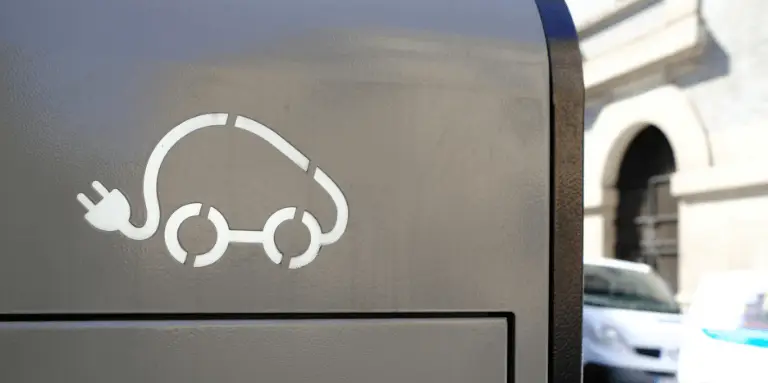
Not only is the location of a recharging point important to protect the point, but it is even more important to optimise the health of the vehicle. That's because.., temperature can affect battery performance. More specifically, in very hot weather, overheating can occur and the charging point will automatically interrupt the power supply to protect your electric vehicle. On the other hand, when the temperature is very low, the battery components are not as receptive to recharging as usual, leading to slower recharging.
If you can only install your recharging solution outdoors, this is perfectly possible, given the weather-resistant models available. However, it is important to provide additional security solutions to protect the charging point against vandalism.
What options are available to you?
As explained above, when you install a charging point for your electric vehicle at home, it's important to check that your electricity meter has sufficient power to avoid electrical overloads.
So what are the solutions for dealing with the problem of electrical overload and meeting your recharging needs?
Changing the rating of your electricity meter
If you have a lot of electrical equipment or want to recharge your electric vehicle during the day, your electricity meter will probably not have enough power. As a result, you will need to increase it. If this is the case, you can change your electricity contract and buy a package that suits your household's needs.
The wattage of your recharging point determines the power required from your electricity meter. Your electricity subscription must therefore be greater than the power of your terminal.. To change the power subscribed to your electricity contract, simply contact your energy supplier.
If you have a Linky meter, the change can be made remotely within 24 hours. However, if you have an electronic or electromechanical electricity meter, a technician will have to be called in to make the necessary adjustment, although it may be necessary to change the meter or circuit breaker. It's worth noting that the procedures, timescales and charges for changing the power of your electricity meter are the same from one supplier to another.
To find out more about the ins and outs of charging stations, you can download our free brochure white paper on charging stations for dummies.
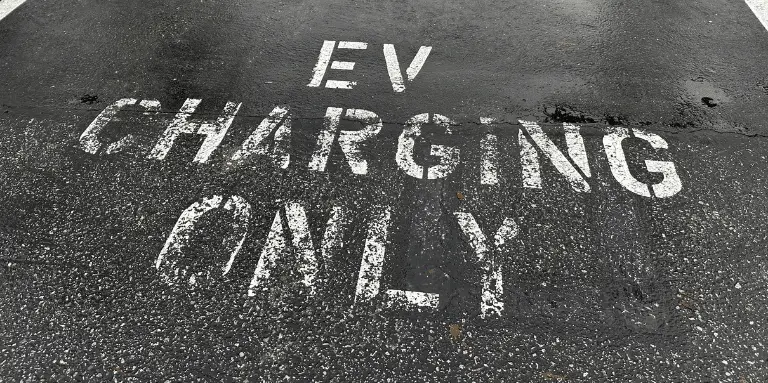
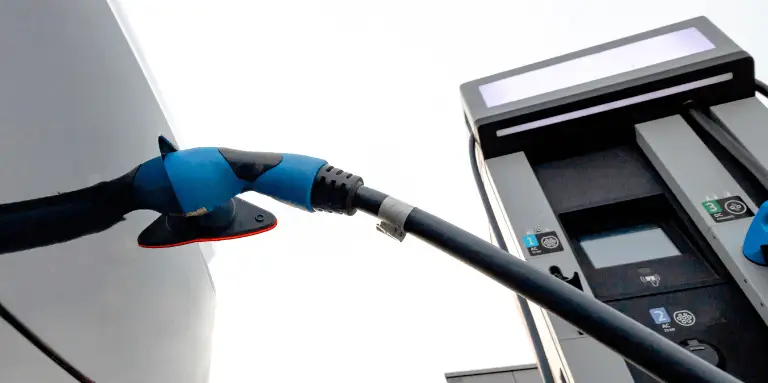
What size electricity meter do I need?
So to ensure that your electrical installation doesn't trip, it's essential to make sure that the power used by your electrical appliances is lower than that of your meter.
For example, for a 3.7 kW charging point, you need a meter with a minimum power rating of 6 kVA. Similarly, for a 7.4 kW recharging point, you need a meter with a minimum power rating of 9 kVA.
However, the minimum wattages in question are those recommended to meet the needs of your charging point alone. Of course, it's not the only electrical equipment in your home, so you need to allow for a higher margin to cover the electricity needed for your other equipment.
To find out how much power you need to recharge your car, our article on How much recharging power should your electric car have? could help you choose the right wattage for your electricity meter.
Compare electricity offers for your charging point according to the following criteria
Electricity charges vary according to the electricity package you take out and the time of day you charge. It's important to compare the different offers to find the one best suited to your needs and budget.
So to compare electricity offers for your recharging solution, you can use a number of key criteria:
- Contract power : It's important to check that the power you subscribe to is suitable for your recharging needs. Too little power can lead to power cuts, while too much power can cost you unnecessarily.
- Price per kWh : Compare the price per kilowatt-hour (kWh) offered by different suppliers. Make sure you choose a competitive offer that will allow you to recharge your solution cost-effectively.
- Contractual conditions : The terms and conditions of the contract should be examined, such as the length of the commitment, the cancellation arrangements and any additional charges. Choose a flexible contract that suits your needs.
- Special offers for electric vehicles : There are offers on the market specially designed for electric vehicles. These offers can include advantageous tariffs for recharging your clean car.
- The origin of electricity : Some consumers want to support renewable energy. Check whether the supplier offers green electricity or environmentally-friendly options.
- Customer support : Find out about the quality of the supplier's customer service. Efficient assistance in the event of a problem can be crucial to your recharging solution.
- Promotions and benefits : Some offers may include promotions, discounts or additional benefits. Keep an eye out for these special offers to save money.
By comparing these different criteria, you'll have the knowledge you need to choose the best electricity offer for your charging solution, based on your needs and your budget.

Purchasing a load-shedding system: what's it for?
A powerboostcommonly known as load shedder or load-shedding systemis a system that balances the demand for electricity with the level of electricity that can be injected into the grid. It intervenes to prevent power cuts by ensuring that it remains within the limits of the subscribed power. In practical terms, load shedding allows your recharging solution to adapt to the power available on your electrical installation. When the charging point is not in use, or when there is a high demand for energy elsewhere, the system can temporarily reduce the charging power.
- Efficient use of available energy resources,
- Avoid overloading the network,
- Reduce electricity costs by optimising energy consumption.
For an installation with home load shedding, a number of factors need to be taken into account, such as :
- location,
- power,
- the power supply,
- connections.
It's also important to define the level of recharging you want. Naturally, it's best to call on a qualified installer to choose the right charging point and programming to get a quote that meets your needs.
Single-phase or three-phase meter: which should you choose?
In fact, most households benefit froma single-phase power supply of up to 12 kVAThis is a form of alternating rather than direct current. For more information, this current is carried by two cables, one phase (red or black) and one neutral (blue), which will have less power on the terminal than a three-phase installation. If you don't have any unusual energy-guzzling electrical appliances, single-phase current is sufficient. You can heat, light and connect all your appliances without worrying about your meter tripping.
Three-phase current, on the other hand, can supply a higher power, ranging from up to 36 kVA maximumThis is why this type of power supply is generally used in businesses, as it will enable the car to be recharged more quickly. This type of power supply provides three times the voltage of a single-phase supply, while ensuring that the voltage is evenly distributed throughout the home. Compared with single-phase, this power supply has four cables, including three phases and a neutral.
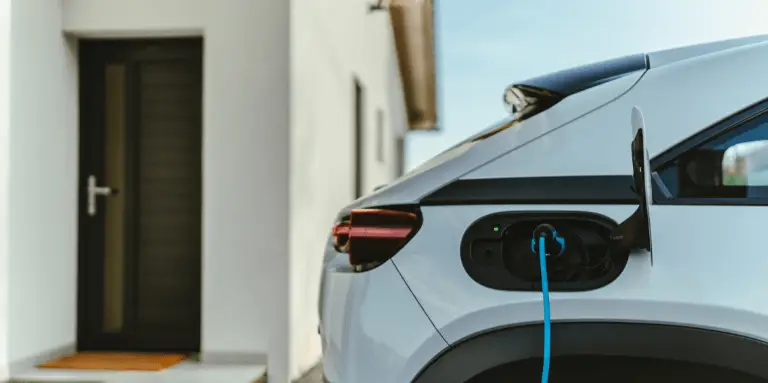
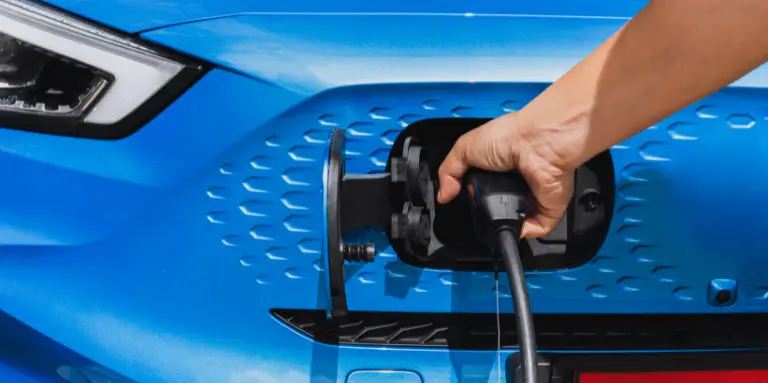
With three-phase, your installation is ready to supply particularly power-hungry equipment, such as a heat pump, certain ovens or washing machines. Three-phase often becomes a necessity when the power of the meter is greater than 18 kVA (when using an energy-guzzling appliance or when the meter is positioned at a certain distance from electrical equipment).
Here are a few characteristics to help you see things more clearly:
- Power requirements :
- Single-phase : Single-phase chargers generally have an output of between 3.7 kW and 7.4 kW, with a phase-to-neutral voltage of 230 volts. They are suitable for standard residential charging needs.
- Three-phase : three-phase chargers can deliver higher power, from 11 kW to 22 kW, for faster charging, with a voltage between the phases and neutral of 400 volts.
- Electrical infrastructure available :
- Single-phase : If your home or facility has a single-phase electrical connection, a single-phase charger is a practical choice, as it matches the available power supply.
- Three-phase : A three-phase charger allows you to take full advantage of the higher power capacity.
- Charging speed :
- Single-phase Single-phase chargers are suitable for overnight or slower charging.
- Three-phase : they offer significantly faster charging speeds, making them ideal for rapid recharging or commercial applications.
In summary, the choice between a single-phase and a three-phase charger depends on your specific energy requirements, the available electrical infrastructure, the desired charging speed and your future plans. Single-phase chargers are sufficient for most residential uses, while three-phase chargers are better suited to faster charging and future upgradability. If you're thinking of upgrading to a more power-hungry vehicle, a three-phase charger may be a better long-term investment.
What conclusions can we draw from this?
In short, you need to find out beforehand whether or not you need to change your electricity contract following the installation of your charging point.
If you recharge your electric vehicle at night, in theory few appliances will be running at the same time, so the risk of power overruns can be avoided. On the other hand, when charging during the day, more electrical appliances are charged simultaneously.
So it's a good idea to plan for a higher power margin if your subscribed power is too low following the installation of your recharging solution. In this article, we've talked about the load-shedding solution, which could be a good compromise to avoid having to take out a new electricity subscription.
If you would like to find out more aboutsupport for the installation of charging points for businesses in 2024For more information, see our article on this subject.
Would you like to install a recharging point?
Beev can help you find the charging point and installer you need, at the best price.
